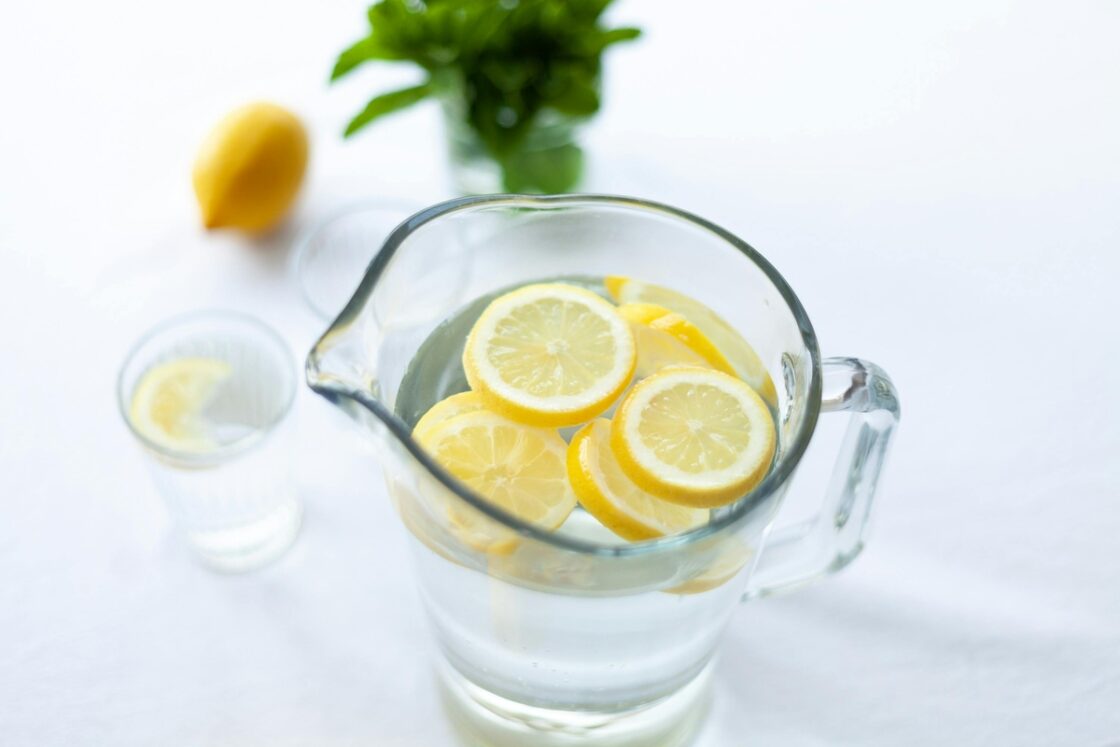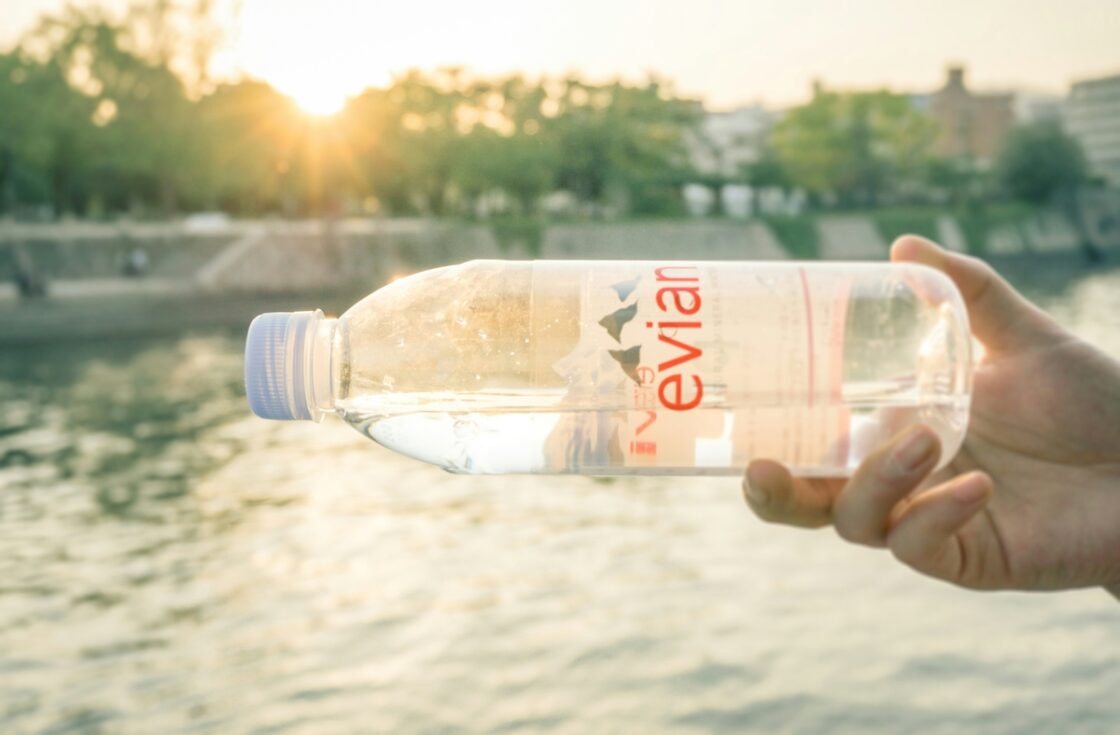
Even when your faucet water seems to be crystal clear, it’s most likely hiding a number of invisible contaminants — and the Environmental Working Group (EWG) has the info to show it. Over 143 million folks world wide are uncovered to PFAS of their consuming water each day1.
To assist reveal the omnipresence of those contaminants, the EWG simply launched the latest version of its Faucet Water Database, which aggregates knowledge on 50,000 water techniques throughout the nation from 2021 to 2023. That is the most recent replace of the EWG faucet water database, which first started in 2005.
What Is the EWG Faucet Water Database For?
The EWG water database reveals the widespread presence of chemical substances, heavy metals, and different worrying substances in consuming water throughout the U.S. — solely a few of that are regulated by the Environmental Safety Company (EPA).
“In brief: Authorized doesn’t imply secure,” writes EWG. “Most neighborhood water techniques get a passing grade from the federal authorities, although contamination could also be greater than what the most recent science reveals is secure. That’s as a result of many consuming water laws are old-fashioned or based mostly on outdated science. And there aren’t any laws for a lot of contaminants.” In different phrases, most of us are consuming contaminated water with out realizing it.
Whereas EPA is legally required to publish this knowledge based mostly on the 1996 Protected Consuming Water Act Amendments, its failure to take action practically 30 years later has impressed EWG’s continued work on this area2. The EPA “nonetheless has not made this knowledge public in a readily accessible or straightforward to know method,” EWG writes3. “Till the federal authorities steps up, EWG’s Faucet Water Database will proceed to fill this vital knowledge hole.”
An Simple-to-Use Database for an Alphabet Soup of Contaminants

Consuming water throughout the nation is pulled from quite a lot of sources, from rivers and lakes to groundwater. It could possibly turn into contaminated in a variety of methods, together with native trade, agriculture, and improper disposal of medicines. Latest analyses discovered 324 completely different contaminants in consuming water throughout the nation, with practically all neighborhood water techniques having detectable contaminants — a lot of that are doubtlessly carcinogenic. A 2019 EWG evaluation discovered that contaminated consuming water may trigger greater than 100,000 extra most cancers instances within the U.S.4
To assist shoppers establish the contaminants almost certainly to have an effect on their water, EWG requested water contaminant knowledge from public and environmental well being businesses in all 50 states and the District of Columbia. After receiving greater than 34 million data, EWG compiled them with the water high quality knowledge collected as a part of EPA’s Unregulated Contaminants Monitoring Rule into the easy-to-use database.
To make use of the database, all that you must do is enter your ZIP code to point out the almost certainly contaminants in your faucet water. From there, you should use EWG’s helpful water filter information to establish which filter is greatest suited to maintain your water freed from the probably contaminants in your space.
What Forms of Contaminants Are in Consuming Water?
Relying on the place you reside, you’ll encounter completely different contaminants in your water. Listed here are a few of the most typical contaminants — and how one can scale back your danger of publicity relying on which contaminant you’re coping with.
PFAS, or “Without end Chemical compounds”
After rising to prominence within the ‘40s following the discharge of Teflon nonstick cookware, PFAS (per- and polyfluoroalkyl substances) turned widespread in our surroundings. Analysis has since proven that PFAS can contribute to elevated danger of some cancers, decreased immunity, and altered metabolism5. And lately, research present that these “eternally chemical substances” are current within the blood of practically all People (together with newborns!), in addition to the consuming water of greater than 143 million folks.
EPA has not too long ago taken steps to eradicate these harmful chemical substances from the setting6. For Tasha Stoiber, Ph.D., a senior scientist at EWG, says the finalization of latest federal consuming water requirements for six PFAS in 2024 was “one of the notable occasions” of late within the combat for clear consuming water7.
“This was particularly important as a result of there has not been a brand new regulation for an unregulated consuming water contaminant handed in practically 25 years,” Stoiber provides. “This instance demonstrates that progress may be made underneath the Protected Consuming Water Act, however we have to make secure consuming water a precedence.”
A serious supply of eternally chemical substances immediately comes from the Division of Protection, which depends on a PFAS-containing firefighting foam. EWG has mapped at the least 720 navy websites nationwide identified or suspected of discharging these eternally chemical substances.
Activated carbon filters for water might assist scale back the presence of PFAS in your family8.
Heavy Metals Stay Pervasive

Heavy metals had been additionally extraordinarily current in consuming water — notably arsenic, hexavalent chromium, and lead.
Arsenic enters waterways both when pure mineral deposits erode and dissolve, or by means of contamination with industrial and agricultural waste merchandise9. It could possibly trigger bladder, lung, and pores and skin most cancers, and is present in consuming water in all 50 states.
Hexavalent chromium, also called chromium-6, is the heavy steel carcinogen made well-known by the Erin Brockovich case within the ‘90s. It has been linked to most cancers and organ injury and is current within the consuming water of over 250 million People. Regardless of these well-researched ties to most cancers, there isn’t any federal restrict for chromium-6.
Lead can be current in some water techniques as a consequence of lead service strains, although Stoiber notes that the EPA has taken steps to eradicate these with “updates to steer and copper laws that required all lead pipes to be eliminated in 10 years.” Nonetheless, she says, “the destiny of those new laws is unsure.”
If you happen to stay in an space served by lead-based strains, EWG suggests decreasing the chance of contamination by flushing the pipes with chilly water every morning and utilizing solely chilly water for cooking.
Industrial Pollution Persist at “Regarding Ranges”

Unstable natural compounds (VOCs) like benzene and trichloroethylene are widespread industrial pollution which were discovered to contribute to elevated most cancers danger, liver injury, and neurological points, even in small quantities. And in keeping with EWG, they “persist in consuming water at regarding ranges.”
In 2022, 198 million kilos of chemical substances had been discharged into rivers and streams by industrial companies, in keeping with the EPA’s Toxics Launch Stock reporting program. Activated carbon filtration is an effective solution to take away these contaminants out of your consuming water.
Chlorine Contributes to Carcinogenic Disinfection Byproducts
Chlorine is a standard disinfectant used to kill off harmful pathogens and make consuming water secure. However when utilized in extra, chlorine might mix with natural matter to create harmful “disinfection byproducts” in faucet water, which EWG notes can contribute to reproductive well being points and elevated danger of most cancers. A brand new meta research in Environmental Well being Perspective confirmed that chlorinating consuming water will increase danger of bladder most cancers by 33%9.
Even water techniques with comparatively low ranges of contaminants may comprise disinfection byproducts, Stoiber says. Fortunately, she provides, “a easy desk high carbon filter can take away these contaminants.”
Nitrogen and Phosphorus
Nitrogen and phosphorus are frequent contaminants, particularly in agricultural communities. “Air pollution from farms and manufacturing facility farms is sort of fully exempt from water air pollution legal guidelines, together with the Clear Water Act that was enacted greater than 50 years in the past,” writes EWG.
Yearly, farmers throughout the nation apply greater than 12 million tons of nitrogen fertilizer and 4 million tons of phosphorus fertilizer to cropland, which may run off into water sources. Ensuing nitrates have been discovered to contribute to elevated danger of most cancers and thyroid points. Nitrate contamination is especially harmful for infants, EWG cautions.
A reverse osmosis filter is the one solution to take away nitrates from water. For anybody getting ready child formulation with doubtlessly contaminated faucet water, one among these filters is important.
Why Bottled Water Isn’t Essentially the Reply

Some persons are extra delicate to contaminants than others and may train further warning every time attainable. These embody infants, kids, the aged, and other people with compromised immunity as a consequence of chemotherapy or HIV/AIDS.
However EWG notes that most often, bottled water shouldn’t be the reply. Not solely are bottled water producers not required to reveal the degrees of contaminants of their merchandise10, however bottled water might also be contaminated with nanoplastics11. Consultants immediately posit that these bottled water nanoplastics are omnipresent potential carcinogens, so it’s possible you’ll simply be changing one harmful contaminant with one other12.
Maintain Officers Accountable for Offering Clear Consuming Water
Whereas buying a water filter is one solution to maintain your self secure from these contaminants, EWG additionally urges People to carry their elected officers accountable — the burden shouldn’t be on us to seek out clear consuming water.
“Urge leaders to spend money on higher water remedy know-how, create sustainable funding for water system enhancements and shield supply waters to maintain air pollution out of your water within the first place,” writes EWG.
That is particularly vital for those who stay in an space the place your water system serves solely a handful of individuals. “These techniques have a tendency to not have as many assets for upgrades for remedy or as many choices for water sources,” says Stoiber.
Sources:
- https://www.ewg.org/news-insights/news-release/2024/11/new-epa-data-show-millions-more-exposed-forever-chemicals
- https://www.congress.gov/104/plaws/publ182/PLAW-104publ182.pdf
- https://staging.ewg.org/tapwater/FAQ.php
- https://www.ewg.org/news-insights/news-release/ewg-study-estimates-more-100000-cancer-cases-could-stem-contaminants-tap
- https://www.niehs.nih.gov/well being/matters/brokers/pfc
- https://www.epa.gov/pfas/pfas-strategic-roadmap-epas-commitments-action-2021-2024
- https://www.ewg.org/news-insights/information/2024/04/what-do-new-federal-pfas-drinking-water-standards-mean
- https://www.ewg.org/tapwater/water-filter-ins-and-outs.php
- http://publichealth.lacounty.gov/eh/docs/security/faq-arsenic-drinking-water.pdf
- https://pubmed.ncbi.nlm.nih.gov/39837568/
- https://www.nih.gov/news-events/nih-research-matters/plastic-particles-bottled-water
- https://pubmed.ncbi.nlm.nih.gov/36739075/

